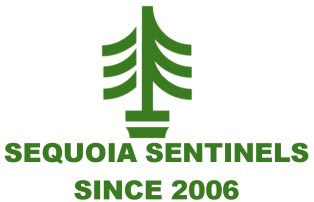What sequoia seedlings need
Sequoia seedlings need six things to grow appropriately to maturity:
- Water.
- Lots of sunlight.
- Altitude generally above 4,000 feet.
- Good soil.
- Fertilizer.
- Space.
Let's take a look at each.
Water
Sequoia seedlings require wet but well-drained soil. If the soil dries too much, the seedlings will likely die. However, too much water can cause the base of the seedling to rot.
Sequoia seedlings do best when watered in the first two years after planting, especially during the summer. I have found that watering twice a week is sufficient. You want to be careful not to over-water them, which can be as damaging as under-watering. Once established, typically after year two, they need no additional watering if located in a proper environment.
I use an automatic drip system during the summer, but it is off during winter. I built a solar-powered automatic water dispenser out of a 5-gallon (or larger) for remote trees a hose cannot reach. You can read about those by CLICKING HERE.
Sunlight
You want to position your seedlings in an unshaded area that receives a lot of sunlight. They will eventually grow taller than all other species in their environment, but you want to maximize their chance of reaching those heights.
Altitude
Sequoias grow best at altitudes between 4,000 and 8,000 feet (1200 - 2400 meters). West-facing slopes on Palomar are the best, as they receive coastal fog that nourishes the tree. Sequoias receive up to 40% of their water from the air.
Soil
Giant sequoia grows best in moist, rich, balanced ph, and well-drained soil. They prefer slightly acidic soil (pH 5.5 - 6.0). Avoid clay soil: Sequoia trees do not tolerate clay soil or hot dry summers. A recommended soil mix for giant sequoias is 30% grit (3/8- pumice, fine crushed gravel, course sand, 1/4 decomposed granite or very fine pea gravel), 30% fine bark, 20% peat, 10% perlite, and 10% garden soil or compost.
Sequoia redwood trees have a unique root system that is considered extensive rather than intensive. Their roots spread widely from the trunk but are not very deep. If growing in a container, do not have a tray under the container.
Fertilize
Replenish nutrients in the soil every 1-2 months with a gentle organic fertilizer or compost. Fertilize more often during the growing season.
Space
Seedlings should be planted at least 25 feet apart, and 50 feet is better. You should also not plant them immediately next to roads or homes. Note that a giant mature sequoia can be more than 25 feet across at its base. The General Sherman tree in Sequoia National Park is considered by many to be the world's largest tree measured by volume. It stands 275 feet (83 m) tall and is over 36 feet (11 m) in diameter at the base. Sequoia trunks remain wide high up. Sixty feet above the base, the Sherman tree is 17.5 feet (5.3 m) in diameter.
Generally speaking, the west-facing slopes of Palomar have annual rainfall, snowfall, humidity, temperature, and solar irradiance that matches that of Sequoia National Park, which makes them an ideal area to plant.
